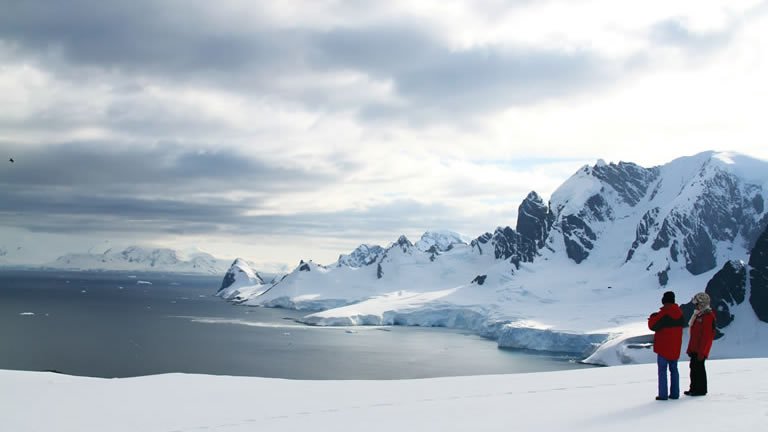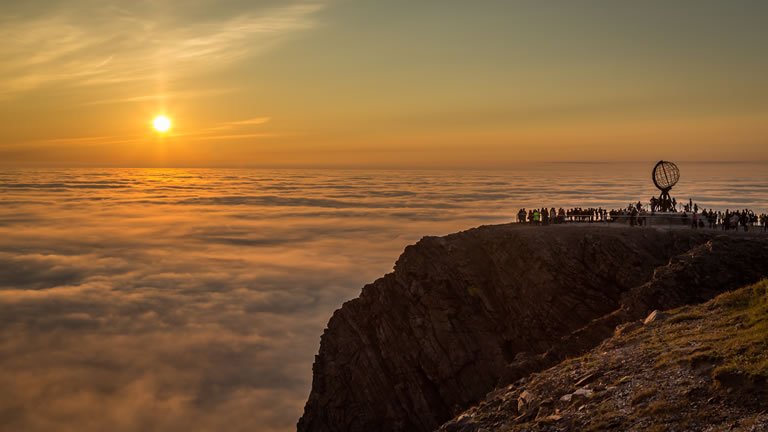Overview
Cruise Itinerary
Svalbard’s northern region differs from the southern region as it is less influenced by the Norwegian Current coming through the Greenland Sea and as a result shows more ice.
The northern part of Spitsbergen Island has quite a number of impressive fjords, bays and glaciers. The east coast of the island is inlcuded in the Nordaust Svalbard Nature Reserve.
Throughout this region there are several walrus haul-outs, spectacular glaciers, bird cliffs and bird islands, as well as surprising flora in Arctic deserts and the possibility to see polar bears.
Svalbard’s Southern Region and specifically Spitsbergen’s west coast is less ice-clogged than the rest of Svalbard due to the moderating influence of the Gulf Stream.
Several fjords cut into the west coast of Spitsbergen and remains of huts, mines and active scientific settlements can be found along these.
Depending on the time of the season, glaciers can be visited on foot or by sea. Hornsund will reveal fascinating views of geological formations, craggy mountains, spectacular glaciers and a variety of seabirds and seals.
Svalbard’s Southern Region and specifically Spitsbergen’s west coast is less ice-clogged than the rest of Svalbard due to the moderating influence of the Gulf Stream.
Several fjords cut into the west coast of Spitsbergen and remains of huts, mines and active scientific settlements can be found along these.
Depending on the time of the season, glaciers can be visited on foot or by sea. Hornsund will reveal fascinating views of geological formations, craggy mountains, spectacular glaciers and a variety of seabirds and seals.
Bear Island is considered Svalbard’s southernmost island, roughly half way between Spitsbergen and Norway’s North Cape. Although the last polar bears were seen in 2004, the name goes back to Dutch explorer Willem Barentsz and his visit in 1596. The island has been used to hunt walrus, for whaling, and even coal mining has taken place. The strategic location on the border of the Norwegian Sea and the Barents Sea has led to a meteorological station being set up by Norway near Gravodden on Bear Island’s north coast. Some two thirds of the island is a relatively flat plain with shallow freshwater lakes and Ramsar Wetland, while the entire island and the surrounding waters are a Nature Reserve.
Bear Island has also been designated an Import Bird Area as it is a staging area for Pink-footed and Barnacle Geese and the steep cliffs south of Sørhamna are home to thousands of breeding seabirds. This is a specially protected area where Zodiacs are allowed to cruise along the cliffs around Kapp Kolthoff. In smaller amounts Atlantic Puffins, Northern Gannets, Glaucous Gulls and Great Skuas are found in between the large Black-legged Kittiwake, Little Auk, Common Guillemot and Brünnich’s Guillemot colonies. The constant battering of the sea has not only created impressive sea caves and tunnels, but unfortunately the Russian vessel Petrozavodsk shipwrecked near Revdalen at the base of the limestone cliffs and the waves are causing a continuous disintegration of the remains of the ship.
The world’s most northerly fishing village, Skarsvag, is set amongst rolling hills, prolific birdlife and arctic fjords. The village is most famous for its proximity to the North Cape, the northernmost point in Europe.
The cape's sea cliffs are perched 1,000 ft above the Arctic Ocean and provides a lookout over a limitless panorama. These cliffs are home to thousands of puffins, gannets and cormorants.
Visitors can stand beneath the massive metal globe and take in the limitless view, hike to cape Knivskjellodden or visit the North Cape Hall for exhibitions on the North Cape’s history.
Called the northernmost point of Europe, the North Cape (or Nordkapp) is situated at the very north tip of Norway and inside the Arctic Circle. Home to where the Atlantic and Arctic oceans meet and with only the Svalbald archipelago standing between it and the North Pole, this is the true land of the midnight sun.
Lookout for hundreds of thousands of puffins, gannets, cormorants, seals, dolphins and whales that make this stretch of chilly water and the tall cliffs their home. Not forgetting the colourful, compact fishing villages, so at odds with the otherwise stark and barren landscape.
Tromsø, nestled within the Arctic Circle, is ideal if you want to see the northern lights, and offers a lovely mix of outdoor activities, cultural events, and restaurants that serve Arctic delicacies. The Arctic Cathedral, with its striking design, is a must-see. Take a cable car up Storsteinen Mountain for panoramic views of the fjords and surrounding islands.
Tromsø is also renowned for its Northern Lights, visible from September to April. The Polaria Arctic aquarium provides a unique insight into Arctic marine life, and the Polar Museum offers a fascinating look at the region's polar history. Stroll through the city center to explore charming cafes, shops, and the historic wooden houses of Skansen.
Life Onboard Silver Endeavour

Relax in luxury as you discover the furthest corners of the world aboard Silver Endeavour. Read more

Suites aboard the Silver Endeavour are among the most spacious in the luxury cruise industry. Read more

Uncover hidden gems and visit remote locations alongside experts on a zodiac excursion. Read more

Whether your suitcase needs unpacking, or you need a scented bath drawn, white gloved butler service has you covered. Read more

Discuss the day's exploits with a refreshment and live entertainment in this exquisite venue. Read more

Stay active in the onboard fitness centre, or perhaps indulge in one of the Otium Spa's therapeutic treatments. Read more
Availability Click on prices below to view cabin upgrades and details
Tour & cruises prices are per person. Prices shown have savings applied, are subject to availability and may be withdrawn at any time without notice. Pricing and trip details are correct at this point in time, however are subject to confirmation at the time of booking and are subject to change by Silversea. For cruise itineraries, cabin images are sourced from Silversea. These should be treated as indicative only. Cabin inclusions, upholsteries and room layout may differ to the image(s) shown depending on the ship selected and your sailing dates.



















